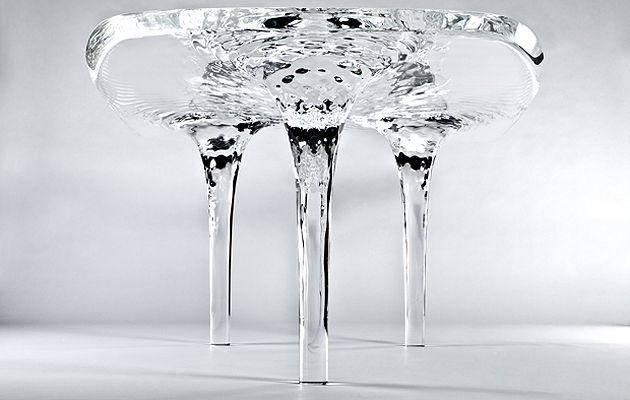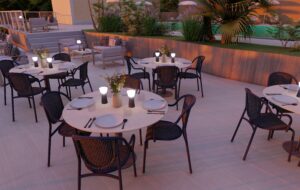|
|
||
|
For David Gill’s gallery in west London, Zaha Hadid has created an ice-like table that appears to be melting into its own legs In preparation for the opening of David Gill’s new gallery in King Street, St James’s, west London, windows are being buffed and final touches of white paint applied. Five burly men are lugging a leaf of Zaha Hadid’s new table into place. Called Liquid Glacial, and on sale in a limited editon for almost three-quarters of a million pounds, it’s precious cargo; for those with more limited budgets, there is a coffee-table version. Two plates interlock, to create a table almost 6m long that resembles sheets of melting ice held up by fragile stalagmites. Beneath the table’s smooth surface the material looks wavy and rippled; the legs, although solid, look hollow, as if liquid were swirling down them. “It’s like a vortex,” says the architect excitedly of this effect. “It’s like water running out of a tap.”
Hadid had originally wanted to create the table in Venetian glass but the material, she explains, “does funny things. It’s like water. It’s weird: you can predict everything, but you cannot predict glass.” Liquid Glacial is made instead of acrylic resin, the rippled effect achieved through a lamination and milling process that Hadid confesses is a mystery to her. “It’s like liquid there, caught in the surfaces,” she says. “I can put fish in it. I’ll float fish inside!” Hadid shows me her 1990 painting, Homage to Verner Panton, depicting a chair in the process of melting, explaining that this initiated her own experiments in curvaceous furniture design. “It started with this small idea of melting and ice,” she says, “and this idea of an icicle dribbling resurfaces in the Aqua Table [for Established & Sons, 2005] to the Iceberg project [for Sawaya & Moroni, 2003]. I’ve been talking about liquid space for a long time.” Also on view at the gallery are Hadid’s Dune Formations, an organically-shaped table and shelving system in aluminium that was also made for David Gill and exhibited at the 2007 Venice Biennale.
|
Words Christopher Turner
Image Jacopo Spilimbergo |
|
|
||






















